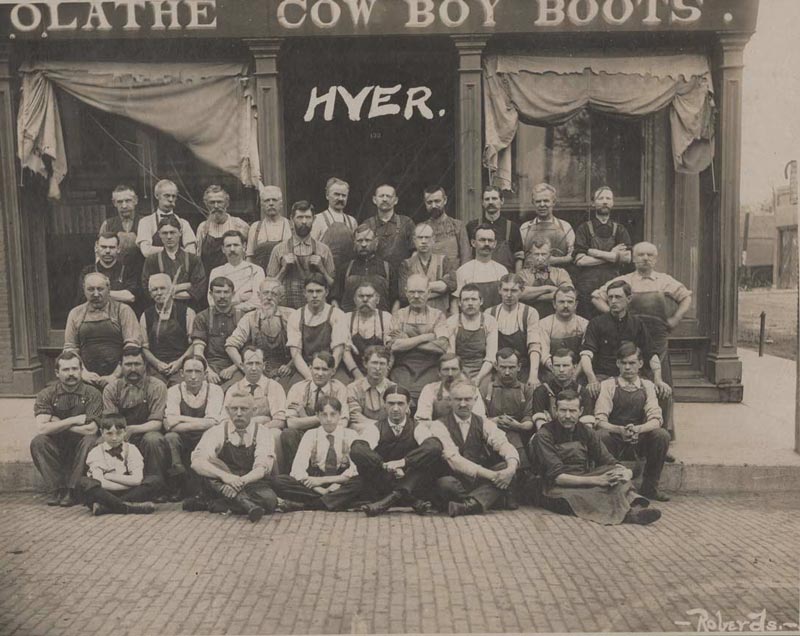
Rodeos to Roundabouts
Even though the nature of daily life and commerce continues to change dramatically, Olathe maintains a connection to its agrarian past. The exhibit explores these connections and highlights the Mahaffie family as one of many who established Olathe as a strong community.
Exhibit by Alexis Radil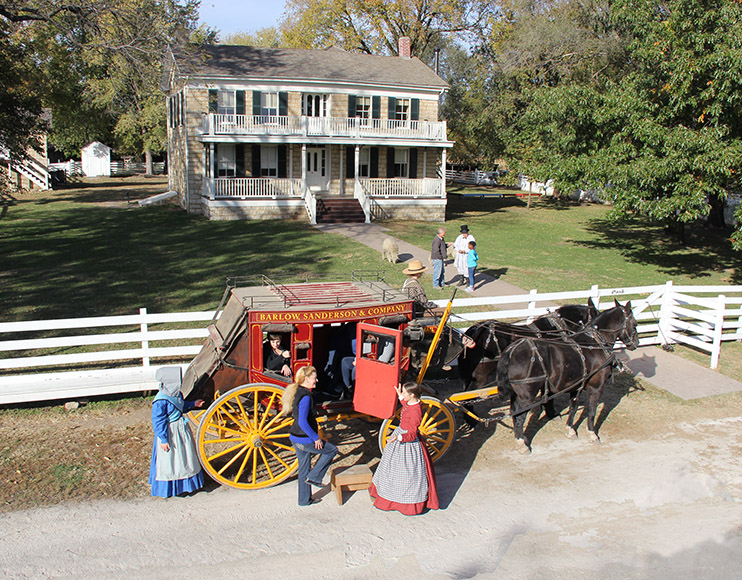
Exploring Olathe's Rural Roots
Change is a constant part of our lives, and the life of a town as well. Olathe was founded in 1857 on the Santa Fe Trail, which had served as a conduit across the American frontier since 1821. The trail was important for moving goods, culture, settlers and cattle and cowboys--or drovers as they were more appropriately known in the early years of the trail. More than just a stop on a trail, Olathe was a vibrant frontier town packed with local businesses, entrepreneurs, and innovators.
Explore the changing identity of Olathe from the mid-19th century until today. Discover how Olathe's rural roots shaped our modern suburban lifestyle.
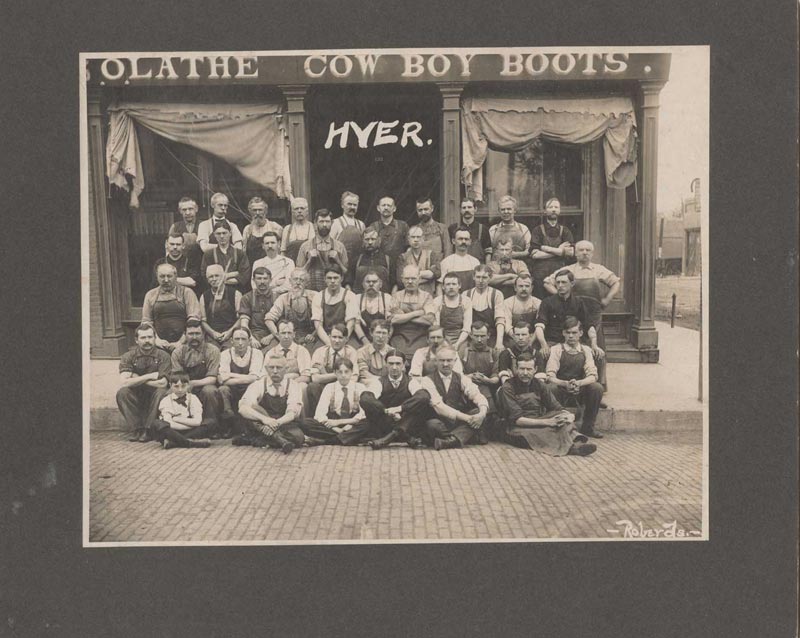
Hyer Bros. Boots & Shoes
In 1875, a German immigrant by the name of Charles Hyer opened a boot and shoe store in Olathe, Kansas.
A talented leather worker, Charles split his time between shoe-making and teaching leather working at the Kansas State School for the Deaf. But his legacy doesn't end here, in fact, Charles Hyer is the inventor of one of the most iconic pieces of footwear in history.
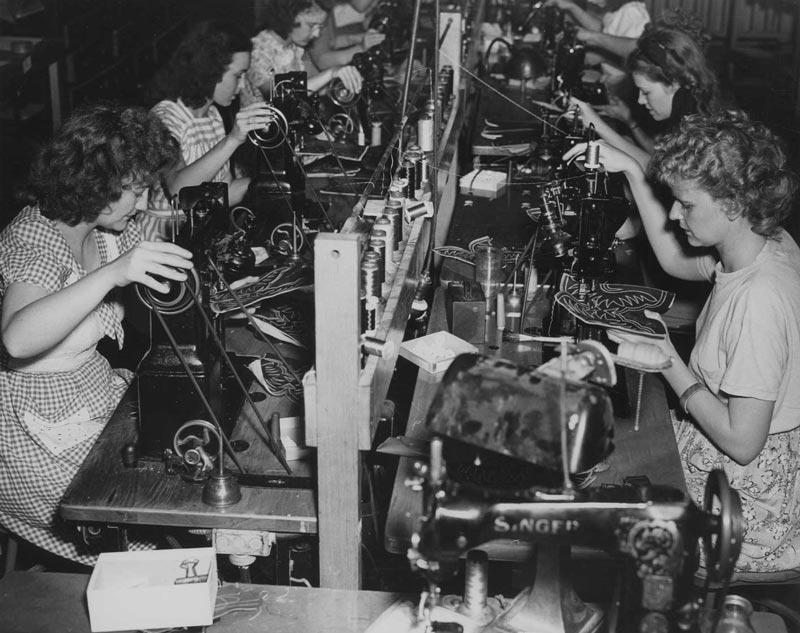
The Cowboy Boot
In the 1870s, a cowboy visited the Hyer Bros. Boots and Shoes shop in Olathe, KS. Unhappy with the typical work boot that was available, the cowboy suggested a few adjustments to his boots: a pointed toe to easily slide into stirrups, a raised heel help keep his foot in the stirrup, and a scalloped top for increased comfort. Mr. Hyer incorporated these changes into his boots and the cowboy boot was born.
Because of the functional and durable design, demand skyrocketed for the new Cowboy boot. Hyer employed family, former students from the Kansas State School for the Deaf, and fellow European immigrants in the manufacture of fine Cowboy boots.
As the company grew, the name changed from C.H. Hyer and Sons to Hyer Boots and Shoe Factory and became one of the major employers in Olathe in the late 1800s.

Boots to Order
As Cowboy boot popularity increased, so did the demand for custom boots.
Hyer invented a measuring system that customers could use to measure their feet, send these measurements to the factory, and receive a custom pair of boots delivered to their home. A version of his measuring system is still used today by modern boot makers.
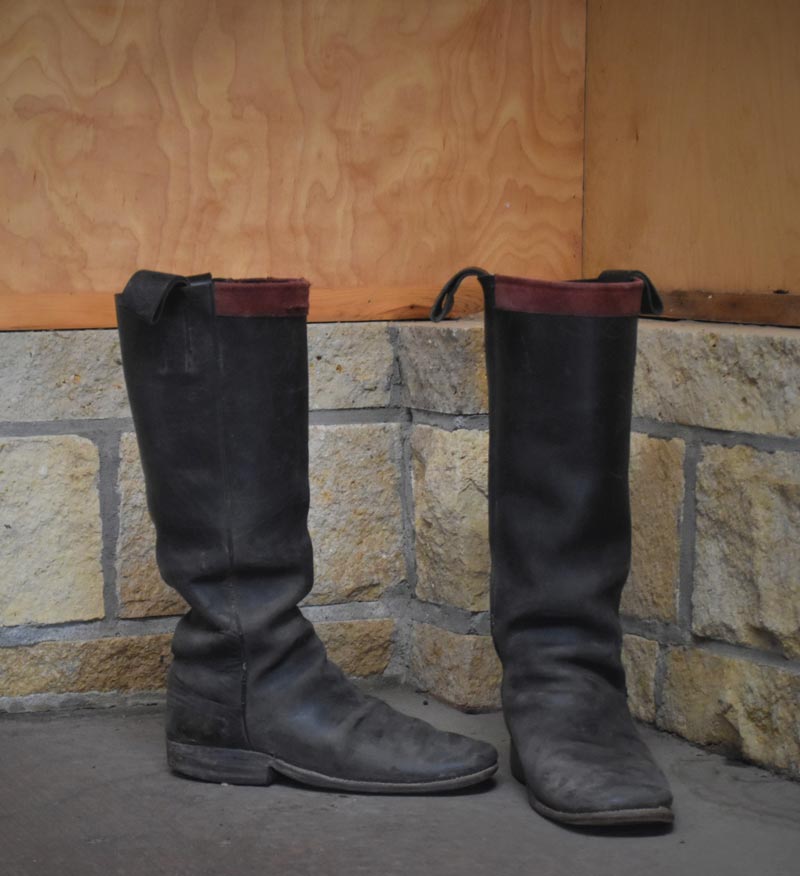
Famous Feet
Word traveled fast and far about Hyer's boot and shoe company in Olathe, Kansas.
Notable customers include presidents Calvin Coolidge and Teddy Roosevelt, Buffalo Bill, Annie Oakley, Buffalo Bill Cody, Roy Rogers, Gene Autry, and Wil Rogers.
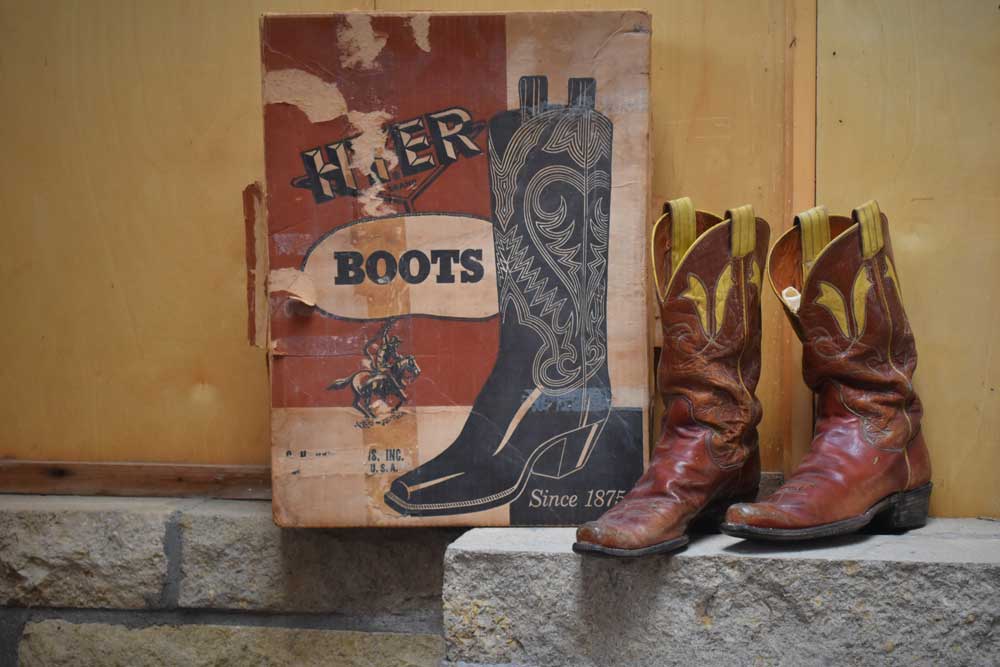
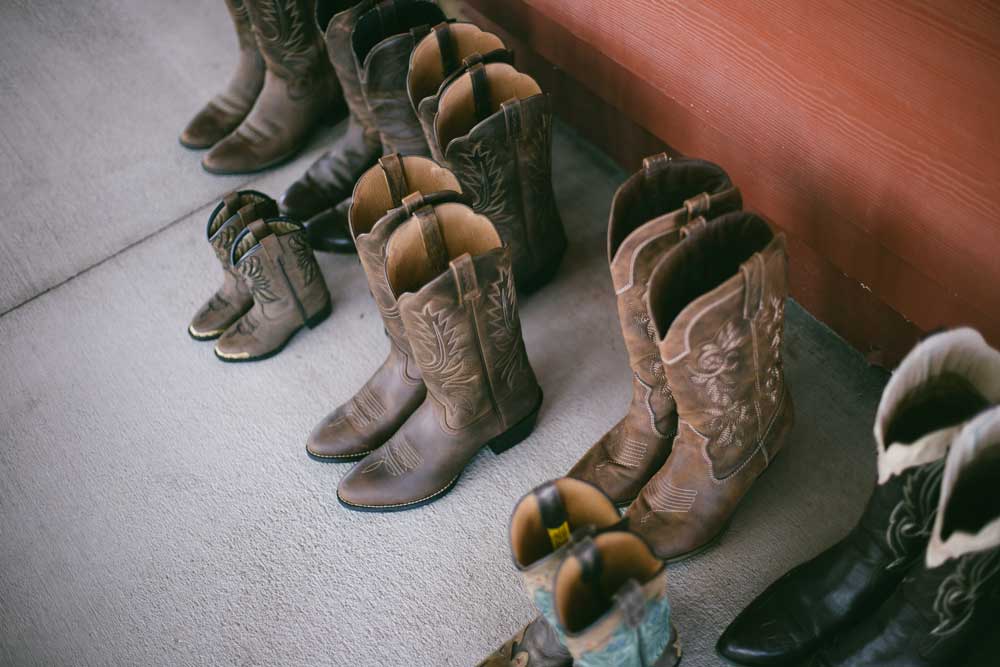
Modern Boots
As time continued, the factory again changed names to Olathe Boots and in 2001, was purchased by Western Leather Goods. Today, you can still purchase a pair of your own cowboy boots from olatheboots.com.
Think about your own experience with cowboy boots. What do you think about when you see people wearing a pair? Do you own a pair?
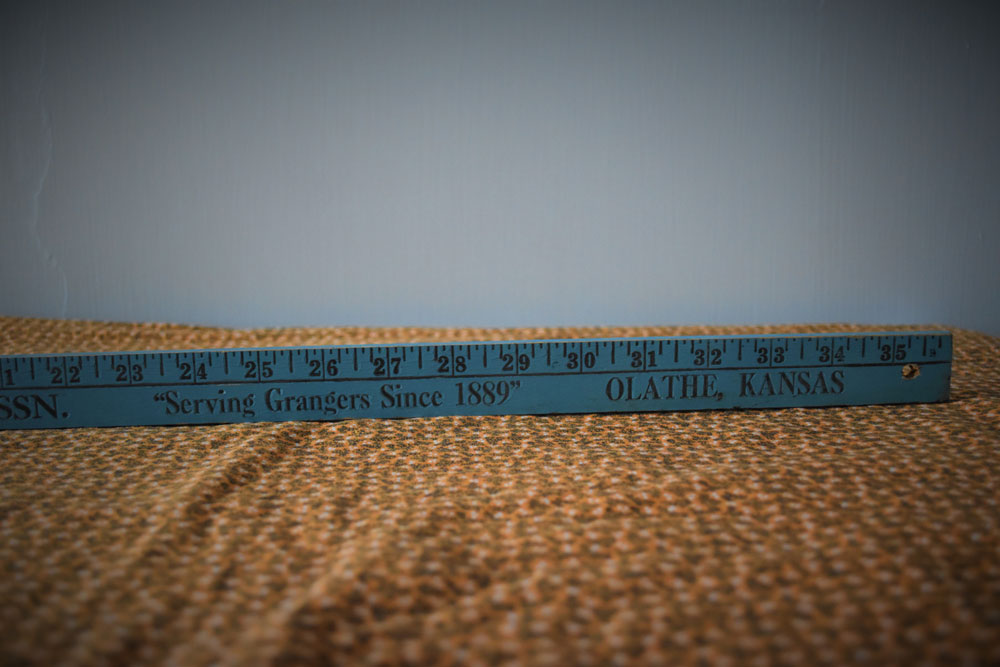
The Blue Yardstick
How does this yardstick connect Olathe to its rural roots and measure up to modern times? Look closely at the name of the company. Many in Olathe and Johnson County, KS, know of the Grange during the annual Old Settlers’ Days the Thursday, Friday, and Saturday after Labor Day in September. Their food booth serves Grange Pups, a tradition to thousands of participants each year. What is the heritage of the Grange? Is the Grange still relevant today?

The Grange
After the Civil War ended in 1865, the economy changed dramatically, and farmers were trying to keep up with the national interests of the railroad and industrial production.
The Patrons of Husbandry was established in 1867 in Washington DC and became known as the Grange. Some of the organizational goals is to provide opportunities for all members, improve the intellectual and social life of farm families, and promote better farming methods. The Grange was also one of the first of its type to admit men and women on an equal basis.
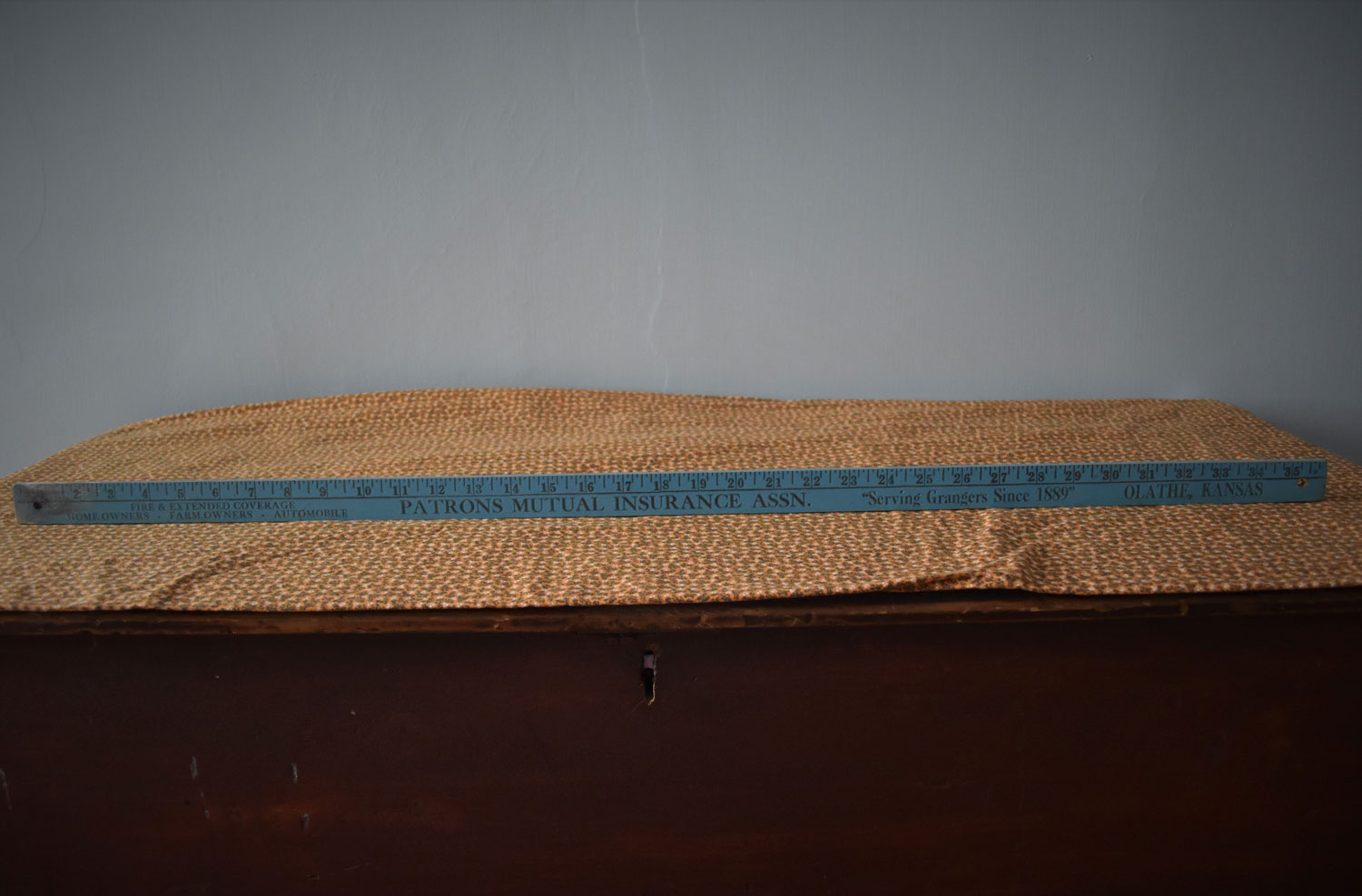
Farmer's Insurance
In the 1870s, the Grange found popularity especially in the midwestern states and Johnson County, KS, was no exception. The first Grange was established in 1873 in Gardner. Both James Mahaffie and his oldest son, William, helped establish the Olathe Grange in 1874. Grangers in Johnson County Cooperative Association managed a store in Olathe and was successful for many years.
As the Grange became a voice for agricultural business interests, part of protecting farmers is insurance. The Patrons Mutual Insurance Association provided insurance and financial services to the growing business of farming.

The Modern Grange
Today, the Grange serves rural communities through grassroots efforts, education and advocacy. The Grange is still active in Johnson County with the Morning Grange #227 providing the traditional Grange Pups at Old Settlers’ Days. Proceeds from these sales provide scholarships to 4-H participants. The next time you enjoy a Grange Pup at Old Settlers’ Days, you are supporting the deep agricultural roots of Olathe.
Rodeos to Roundabouts
The full exhibit is on display at Mahaffie Stagecoach Stop & Farm Historic Site1200 E. Kansas City Road
Olathe, KS 66061


 Get Directions
Get Directions Visit Website
Visit Website